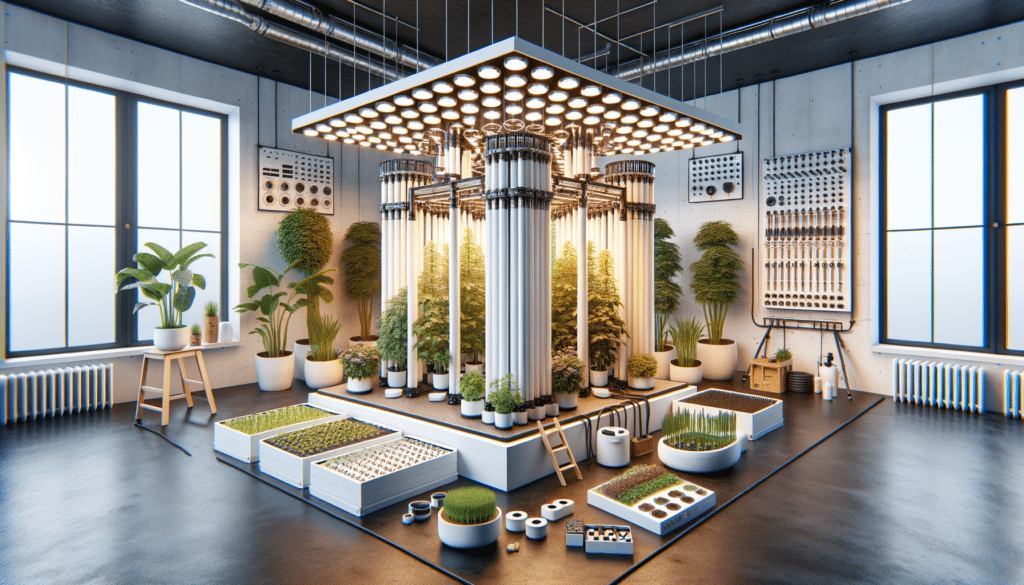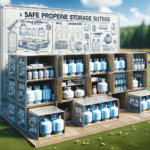Introduction to Hydroponic Garden Systems
Hydroponic gardening is revolutionizing the way we think about growing plants. By eliminating soil from the equation, hydroponic systems allow for efficient, space-saving, and sustainable gardening solutions, particularly in urban environments where space is a premium. The key to hydroponics lies in its ability to deliver nutrients directly to the plant roots through water, which can lead to faster growth and higher yields compared to traditional soil gardening.
There are several types of hydroponic systems, each with its unique advantages and setup requirements. From the straightforward wick system to the more complex aeroponic systems, the variety of options ensures that there is a hydroponic solution for every gardening enthusiast. As we delve deeper into this article, we will explore some of these systems, provide insights into setting up indoor hydroponic gardens, and discuss the critical role of grow lights in ensuring plant health and productivity.
Exploring Different Types of Hydroponic Systems
Hydroponic systems come in various forms, each tailored to different needs and levels of gardening expertise. The most popular systems include:
- Wick System: This is one of the simplest forms of hydroponics, ideal for beginners. It uses a wick to draw nutrient solution from a reservoir to the plant roots.
- Deep Water Culture (DWC): Plants are suspended in a nutrient-rich water solution, with roots submerged directly in the water. This system is known for its simplicity and efficiency.
- Nutrient Film Technique (NFT): A continuous flow of nutrient solution runs over the roots, which are supported by a sloped channel. This system is highly efficient and popular among commercial growers.
- Aeroponics: This advanced system suspends plants in the air and mists the roots with nutrient solution. It allows for maximum oxygen exposure and rapid growth.
Each system has its pros and cons, such as cost, complexity, and maintenance requirements. For instance, while the wick system is easy to set up and maintain, it may not be suitable for larger plants that require more nutrients. On the other hand, aeroponics offers rapid growth but demands precise control over environmental conditions.
Innovative Indoor Hydroponic Setup Ideas
Setting up an indoor hydroponic garden can be an exciting venture, offering a fresh take on home gardening. Whether you live in a small apartment or a house with limited outdoor space, hydroponics provides a viable solution to grow your own herbs, vegetables, and even flowers indoors.
One popular setup is the vertical garden, which utilizes vertical space by stacking multiple layers of plants. This is particularly effective in small spaces, allowing you to grow a variety of plants without taking up much floor space. Another innovative idea is the use of modular systems that can be customized and expanded as your gardening needs grow. These systems often come with built-in lighting and watering mechanisms, making them ideal for those new to hydroponics.
For those interested in technology, smart hydroponic systems offer automated solutions that monitor and adjust nutrient levels, water, and light exposure, ensuring optimal growth conditions. These systems can often be controlled via smartphone apps, bringing a modern twist to traditional gardening practices.
The Role of Grow Lights in Hydroponic Systems
Grow lights are an essential component of indoor hydroponic systems, as they provide the light energy necessary for photosynthesis. Without adequate light, plants cannot produce the energy they need to grow and thrive.
There are several types of grow lights available, each with its unique characteristics:
- Fluorescent Lights: These are cost-effective and emit a broad spectrum of light, making them suitable for growing leafy greens and herbs.
- LED Lights: Known for their energy efficiency and long lifespan, LED lights can be customized to emit specific light spectrums, catering to the needs of various plant types.
- High-Intensity Discharge (HID) Lights: These lights are powerful and often used in commercial setups. They are ideal for flowering and fruiting plants that require intense light.
Choosing the right grow light depends on the type of plants you wish to grow, the size of your setup, and your budget. It’s important to consider the light spectrum, intensity, and duration needed for your specific plants to ensure healthy growth.
Conclusion: Embracing Hydroponics for a Greener Future
Hydroponic gardening offers a sustainable and efficient way to grow plants indoors, making it an attractive option for urban dwellers and gardening enthusiasts alike. By understanding the different types of hydroponic systems, exploring innovative indoor setups, and utilizing appropriate grow lights, anyone can create a thriving indoor garden.
As we face increasing environmental challenges, hydroponics represents a step towards more sustainable agricultural practices. It allows for the conservation of water, reduces the need for pesticides, and can be practiced year-round, regardless of climate conditions. Embracing hydroponic gardening not only contributes to personal well-being by providing fresh produce but also supports global efforts towards a more sustainable future.


